I first heard about British army bivvy bags (“bivouac” if you’re being fancy) through outdoors advocate Al Humphreys. He’s a fan of the army issue bivvies and I was acting on the advice in his article when I bought my first one online.
Unfortunately, the bag I received was old (1994) and in a pretty bad state. It was also “Grade 1”, which means that it’s only had one owner and is meant to be in pretty decent nick. The first time I used it, a lot of water got in at the base, the surface material was wetting out (becoming saturated with water), and to top it off there was a nice hole in the head section. However…
I could see how, if it were functional and undamaged, it would be a fantastic piece of kit. So I didn’t want to give up. I found a local army surplus retailer, visited the store and got myself another one. This time it had a DPM camo surface (not olive green), there were no holes and it was issued in 2010…so not quite 25 years old like the last one.
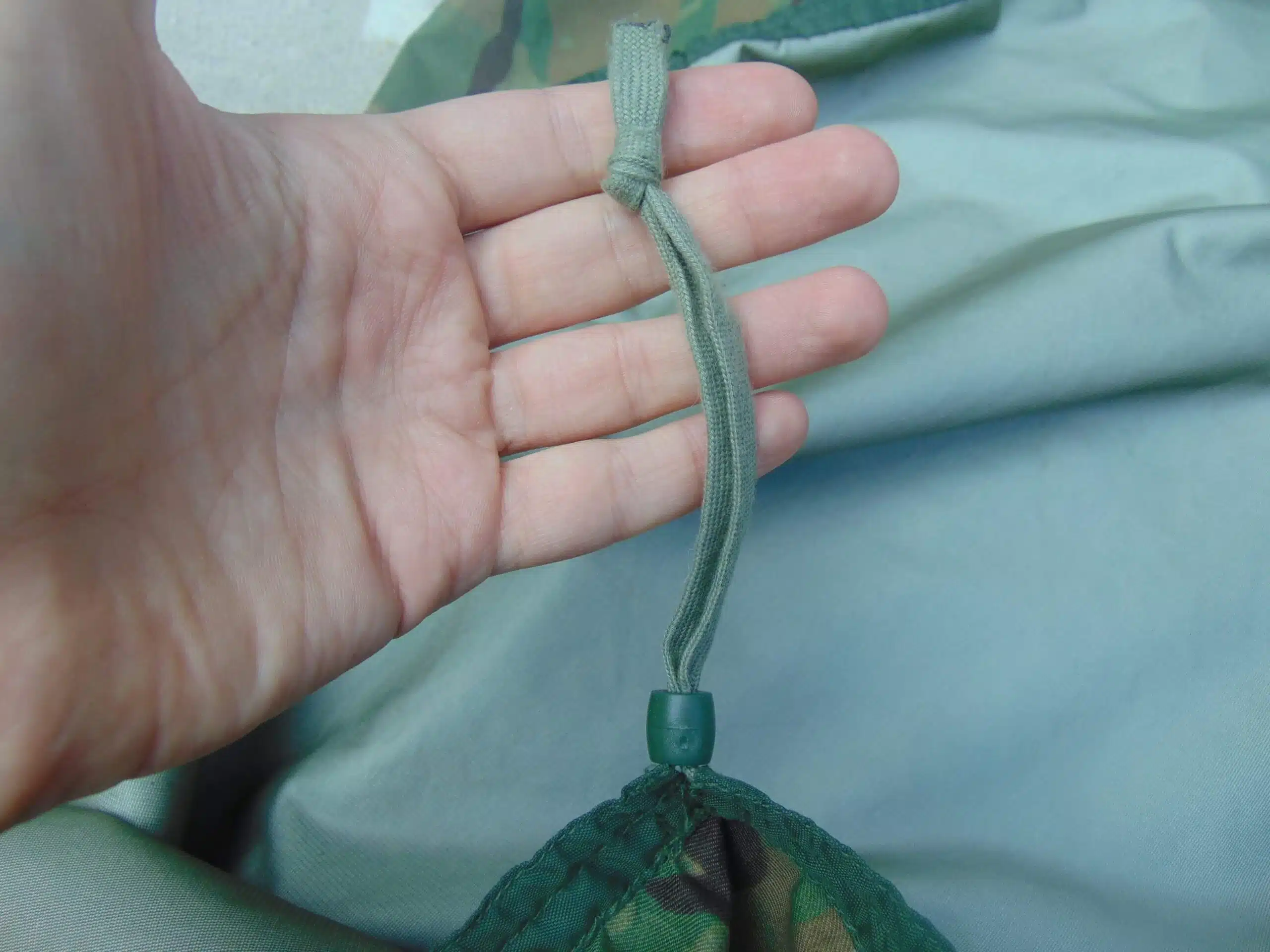
And it’s one of the best pieces of kit I’ve ever bought. I love it. It’s (more or less) watertight, very breathable and nice and roomy.
If you’re thinking about buying an army bivi bag, read this little guide first. If you buy online, it’s often luck of the draw. But you can make sure you get a quality product if you take a few precautions.
Having the right expectations with waterproofness
There’s a video on YouTube of a kid standing in a reservoir with an army bivvy. They are very waterproof, but they’re not impermeable (no breathable fabric really is). So it’s important to remember that when you’re using it without protection in very heavy rainfall/on damp ground that water can get it (though it should be very minimal).
A friend of mine in the army said that the main use of bivvies is to stop your sleeping bag from getting damp and protect from dew. This is why they’re almost always combined with a tarp and sleeping mats, especially in inclement weather. The army issue roll mats are 10 cm longer and 10 cm wider than typical store-bought mats to account for the whole of the sleeping bag/bivvy.
So you want to avoid keeping it out in lots of heavy rain and having the base in contact with sodden ground, where water can leech through. I don’t have an oversized mat and I’ve found that it’s very easy for my feet to end up resting on the wet, cold floor. You can read about army roll mats here. They’re available new from the company that makes them for the military (unlike bivvies).
The condensation issue
The big issue with bivvies is condensation. Over the course of the night you will release lots of moisture in the form of perspiration. The “dew point” is the temperature below which this water will condense and form droplets. Because the outside of your bivi is in contact with the cold outside air, droplets will condense on the inside surface. The idea with breathable bivvies is that a large amount of this water vapour can pass through the permeable fabric (Gore-Tex) without condensing.
The army bivvies perform brilliantly in this regard. I think the size and vapour-permeable material combine to make something that seems almost impervious to condensation. I’m yet to try it in really humid conditions, but it certainly performs well in the cold. I assume the larger size improves ventilation (where air carries moisture out of the bag).
The problem with humidity is that for vapour transfer to occur (from inside your bag to outside) it needs to be less humid on the outside. Humid air dissipates. So if it’s a very humid night, don’t be surprised if condensation starts to form.
DWP and Gore-Tex deterioration
I’m no fabrics expert and if anybody wants to jump in and correct me please leave a comment. Over time,the durable water repellency (DWR) of your bivvy will diminish. A DWR isn’t responsible for waterproofness (that is achieved by the Gore-Tex membrane). Rather, it is a water repellent finish that is applied to the outside fabric of the bag that causes water to bead and roll off.
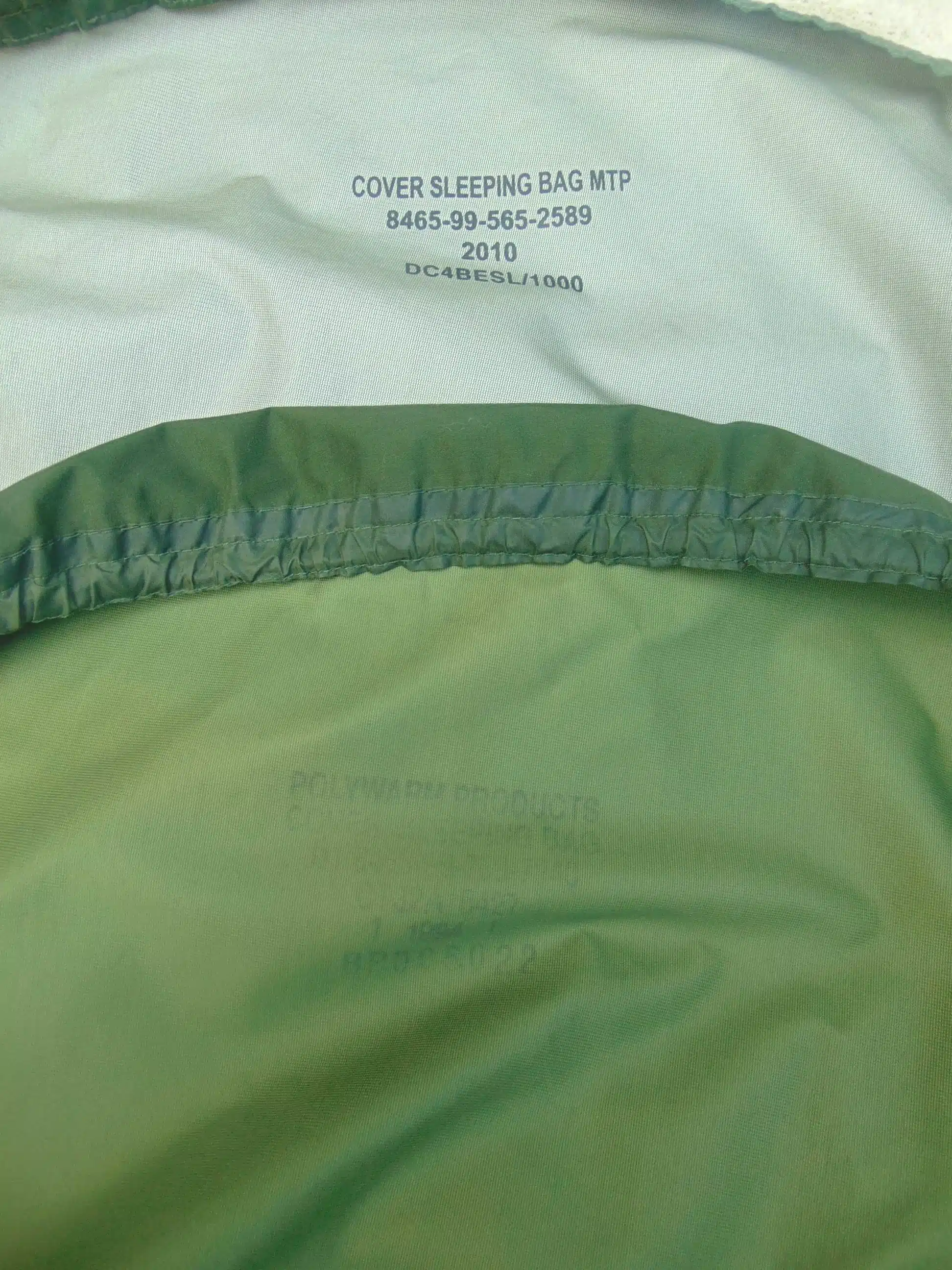
With army bivvies there are a few problems relating to waterproofness, breathability and general wear and tear. First off, as already mentioned, the durable water repellent (DWP), with which the surface fabric is treated, degrades with time. This results in what’s called “wetting out”, where the outer fabric becomes saturated with water. You can overcome this by cleaning and reproofing (described below).
If your Gore-Tex membrane is relatively in-tact, there shouldn’t be any issues with leaking. However, it’s when the Gore-Tex membrane deteriorates that you start to run into trouble. Because the bivvies experience a lot of wear, micro-cuts (invisible to the eye) can occur in the Gore-Tex, making it more permeable to water. Imagine piercing the fabric of your bivi with a fine needle dozens of times. That’s going to make it less resistant to water. If you think about all the wear a bivvy has had (forest floors with stones, thorns, pine needles etc.), then you can see why age can be an issue. You want a bag that’s as new as possible.
What to look for
Here’s my checklist for buying:
- Make sure you can read the printed text in the head area. This is a good indicator of wear as well as age. Go for an issue year as close to now as possible. Keep in mind, however, that some bivvies don’t have this printed text.
- The seam tape should not have been replaced (replaced tape often looks dark brown).
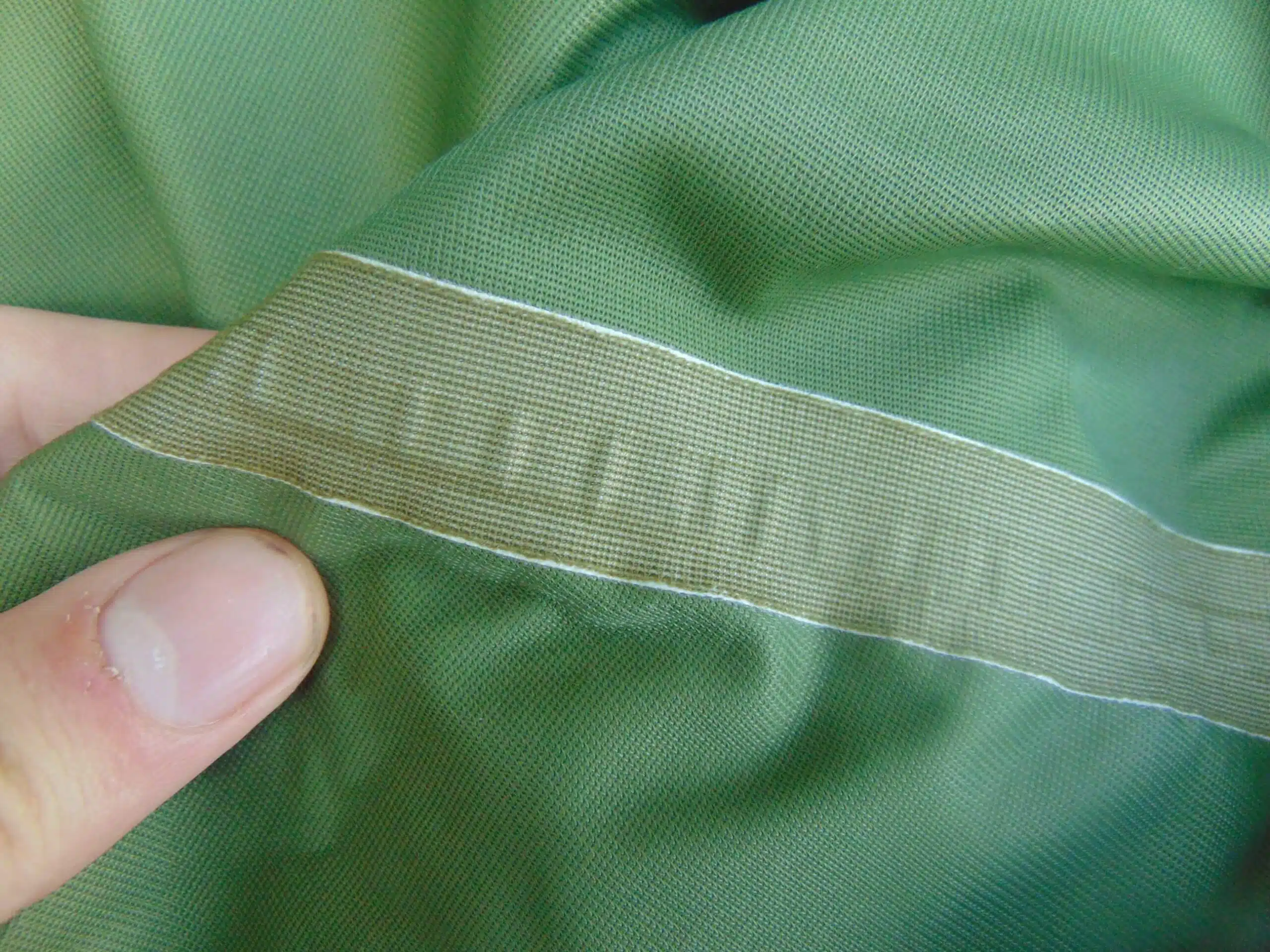
What you want instead is tape that looks almost transparent, the same colour as the inner liner (more or less).
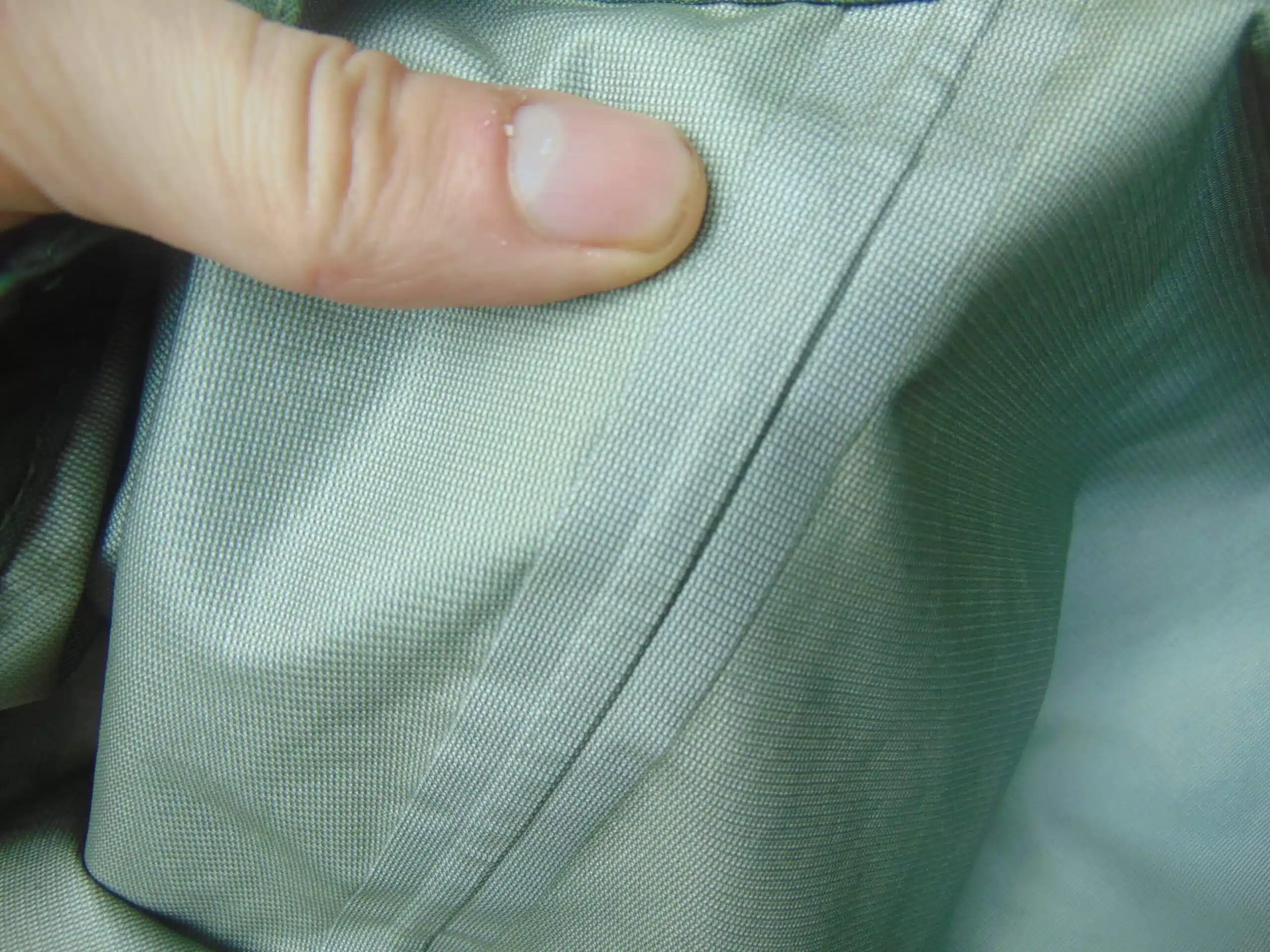
- No obvious signs of wear and tear and the like. Holes are a big no no.
- Drawstring attached! I’ve no idea why people remove them.
Looking after your bivvy
Generally, looking after you bivvy means keeping it clean and reproofing it every so often (once a year or every two years, depending on how much you use it).
Nikwax “Tech Wash” is designed specially for cleaning Gore-Tex materials. Detergent can block pores further so avoid it if possible. “Nikwax Wash-In” is probably the easiest way of reproofing as it goes straight in the washing machine.
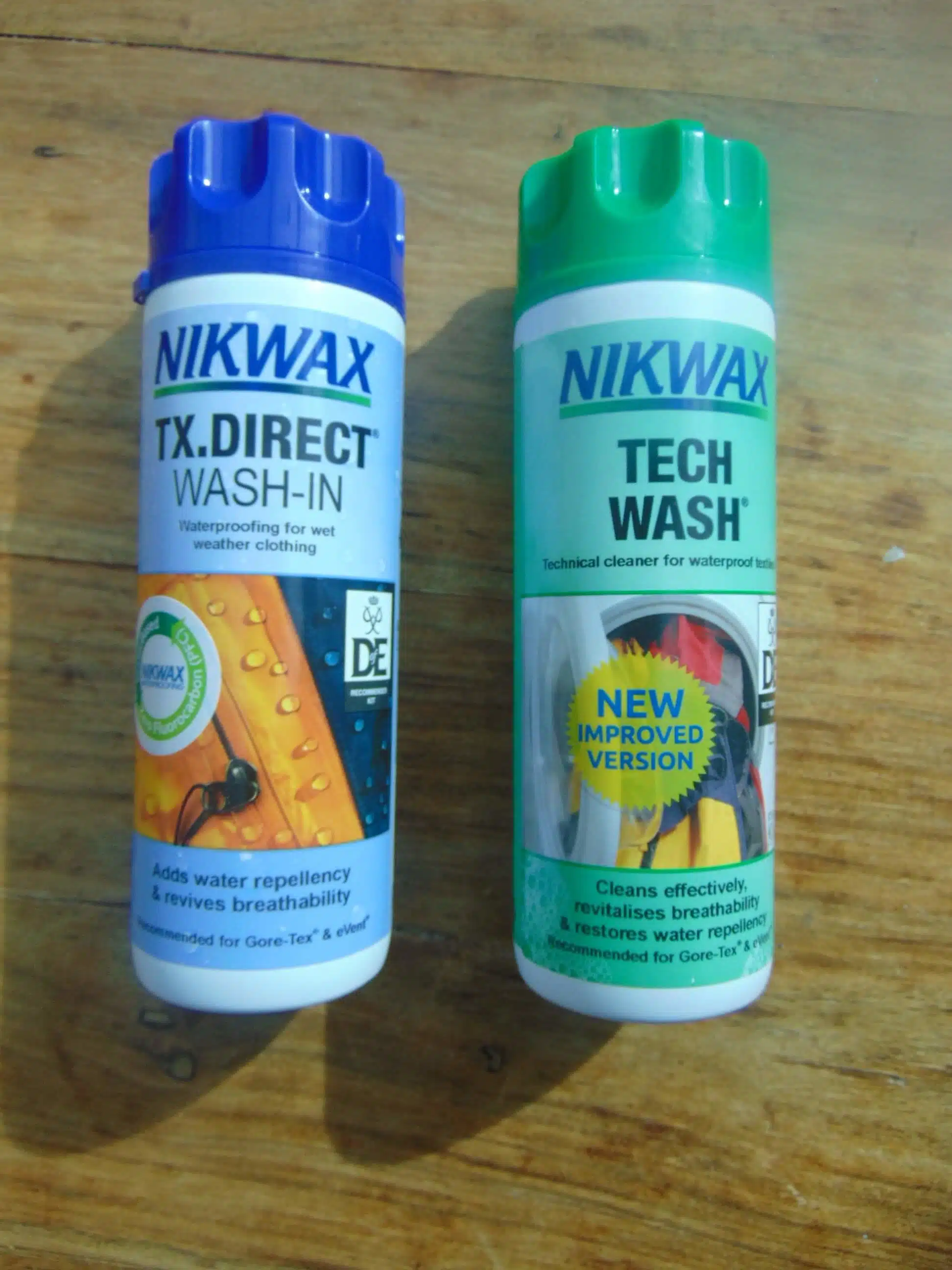
Where to buy?
Go to a shop and check the age, quality and general wear and tear. You should be able to see the year and other printed text (it shouldn’t be worn down as in the picture abovr).
I understand that not everyone has a local army surplus store, and one of the best options for price is eBay. Click here to have a look. Just make sure you ask all the right questions!
What are your thoughts? Leave a comment below!
What are your thoughts and experiences? Please leave a comment below and let me know!
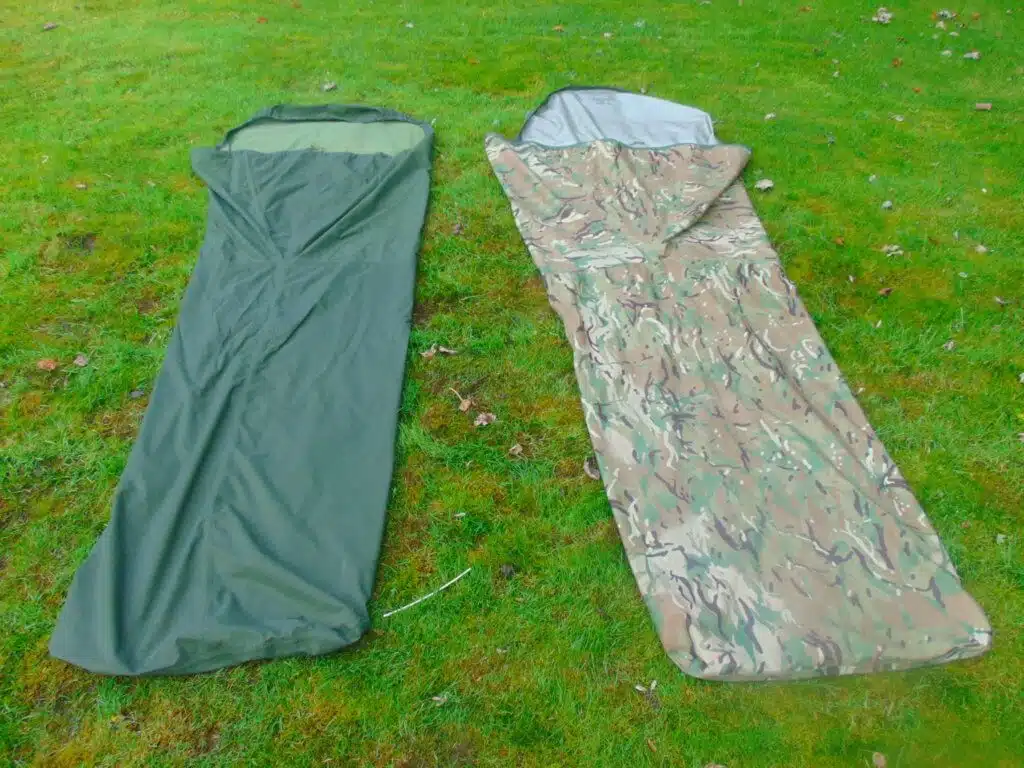
Thanks for this very helpful guide.
For camo bags, it’s much easier to see holes when the bag is inside out as the pattern on the outside makes them harder to see.
A bag I bought through the ‘net had lots of little brown marks on the inside where dirty water from outside had seeped in – another clue if the bag hasn’t been cleaned a lot.
Thanks for the tips Steve! It sounds like the bag you mention with the brown marks must have had lots of micro-abrasions – one think even the shrewdest shoppers can’t guard against!
People remove the drawstring because it flops onto your face while you’re sleeping and it’s really annoying.
I’ve been using an ancient British army bivvy bag (1990’s issue) for 10 years with no problems (spring-autumn use). I use a small tarp if it’s raining and always a Multimat foam roll mat.
The only problem with them is the pack size and weight are both quite a bit greater than the ones marketed to the general public (e.g. by Alpkit). Other than that, they are hard to fault.
Thanks for the comment Paul! Interesting to know about the drawstring. I’ve never had that problem. What was the condition of the bag when you bought it? I always say you’re better off getting a lightly-used one if possible (through a dealer) rather than an old one on the internet (with years of military use) if possible. My experience is that the newer ones are better at keeping rain out and with ventilation too. I’m with you on the weight and pack size!
Great review thank you!
I’m a bikepacker and have been trying to get the weight down during the summer months. I’m ex services and remember guys sleeping in their kit and boots inside a bivvy bag, so they could be up and ready quickly when needed. I’m going to invest in one of these modern versions. It looks like it has a reflective inner which should reflect some heat back. Perhaps that’s why it adds an extra layer of warmth? For mild temperature use, I’m going to see if down jacket and down trousers are enough, and save all that worming and squiggling to get inside the sleeping bag inside the bivvy bag. A small tarp will allow me to sort kit if raining but I’m hoping that can be avoided too on dry and mild nights.
Hey Trevor! Yep give it a go, I imagine in the warmer, dry months and mild temperature down clothing should be more than enough. I’d recommend a floor/camping mat if possible so the bottom of the bag doesn’t get too sodden.
The key to getting into the bivvy easily is to just slide it on over the foot tip of your bag…sort of like slipping on a prophylactic, except it’s for your entire body.
Hi Rick, thanks for the tip!
Interesting info, thanks for uploading. Decided to buy a British army bivvy but went with a e
New/unissued bag to hopefully deal with potential problems that could occur with ‘graded’ bags.
Hi Laird, great! I hope you enjoy using it!
I always use with a tarp and start with the bag rolled down past my waist .This keeps my legs try when they stick out of the tarp and avoids condensation. If I need to I can quickly pull the bivi up all the way but this only happens in really bad weather.
Cool! Thanks for the tip Graham.
I got my first British Army bivi bag from a soldier (traded for a Canadian shelter half) when serving in the Canadian Army in the First Gulf War, 1991. I used it for 15 more years on exercise and operations from Canadian winters to rain forest, and for many more years after I retired for family camping to 10-day thru-hikes. I swore by it. The only downside is the weight (it’s 885 gm), but for me, it was always well worth it. I left my original behind when I moved to the UK 4 years ago, but just recently bought a “new-old-stock” replacement for solo wild camping here. There are lighter civi ones available (which admitedly I’ve not tried), but I prefer the peace of mind that comes with the more durable mil-spec ones. Provided you get one in good nick, I highly recommend them.
Hi Chris, thanks so much for sharing your experiences. I’ve personally tried a few retail ones and nothing comes close!
Do you have any experience with non-genuine bivvy? I’ve just bought one from the eBay. When the package arrived, I’ve founded that the NSN number in the head area is missing. Seller claim the material is Still Gore-Tex.
Hi Daniel, I’ve had a look at the link (I’ve removed it from the comment). I think it’s likely that the company responsible for making the army bivvy probably does sell them to army surplus stores too, so you’ve probably got the genuine article.
Re-reproofing. Wash in isnt recommended with a bivvy bag. You should use spray on ideally. Putting a bivvy in a machine can result in it becoming a big bag of water being thrown around which can result in the fabric delaminating from the goretex membrane… Lesson learned the hard way a few years ago!
Thanks for the info Rob!
Hi Dan,
Great site. Very informative and nicely presented. I bought a British army bivy on ebay a little while ago (admittedly on a whim). 1996 issue and dark brown seam tape (which suggests the original one may have been replaced). I haven’t used it yet. Is the replaced seam tape that much of an issue in practice ? I have had a good look and the edges of the seams are not frayed. I guess there is only one way to find out if it really is waterproof , but I just wanted to get your views. All the best. C
Hi Cyril, yes absolutely the brownish tape may just be colouring with age and it could be absolutely fine. Take it out for a test run and see! Thanks for your informative comment.